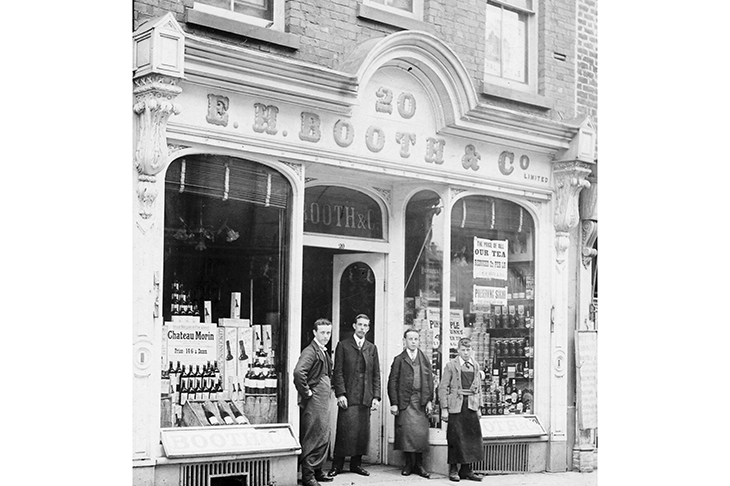If you mention the word ‘Booths’ anywhere south of Knutsford, you will usually be met with a blank expression, followed by someone wondering if you are mispronouncing the name of a nearby pharmacy. But in the north-west the name is associated with a store native to Lancashire, which, uncharacteristically for a supermarket chain, holds a fond place in many people’s hearts.
For those not aware of the Booths chain, it is often called the north’s answer to Waitrose. I think the comparison is a tad unflattering to Booths; while Waitrose has rapidly commercialised, Booths has retained its local roots and independent character. It has far fewer stores than other chains and is still very much a family business: the current chairman is Edwin J. Booth, great-great-grandson of the store’s founder.
The first shop was created in Blackpool in 1847 when Edwin Henry Booth, aged 19, borrowed £80 worth of goods from his former employer to open the China House, which specialised in tea. In the late 1800s, having turned a profit and under the steward-ship of Edwin’s son John, Booths expanded into Lytham and Blackburn. There are now 28 stores spread across the north-west, Cumbria and Yorkshire, but the brand has never ventured into the south of England.
My grandparents remember when the first store came to Garstang in the 1960s, built on the site of the seamstress’s old shop. It was the first supermarket to arrive in the small market town and its narrow aisles were packed to the rafters with both goods and people, making it almost impossible to reach the till on a busy Saturday. My mother fondly remembers walking in as a child and being hit by the heavy aroma of coffee as she crossed the threshold. In the 1970s it was the only supermarket (in Garstang at least) to specialise in coffee, which was ground in-store for customers to take home.
J.K. Booth, the grandfather of the current chairman and grandson of the first store’s founder, is remembered in Garstang, where he lived for some time, as both unfailingly polite and incredibly particular. The family’s chauffeur always had to be in the right place at the right time, and when work was done on his land, everything had to be just so. This attention to detail seems to have carried on to the stores today, which are known for their careful presentation and attractive displays. However, it is the chain’s commitment to stocking local produce whenever possible that has endeared it to the Lancashire area. It would be unthinkable, for example, for the Garstang Booths not to stock the Lancashire cheese of the nearby Dewlay or Kirkham’s dairy.
The downside is that this comes at a cost, and Booths is also known for the deep purse one needs to shop there. My first experience of the chain was when it opened a store in the Media City area of Salford. My neighbour told me, with an eyebrow raised, that she had begun to travel there for the weekly shop — the very height of decadence and sophistication. But for many a north-westerner, a Booths supermarket in town is simply a welcome sight.







Comments